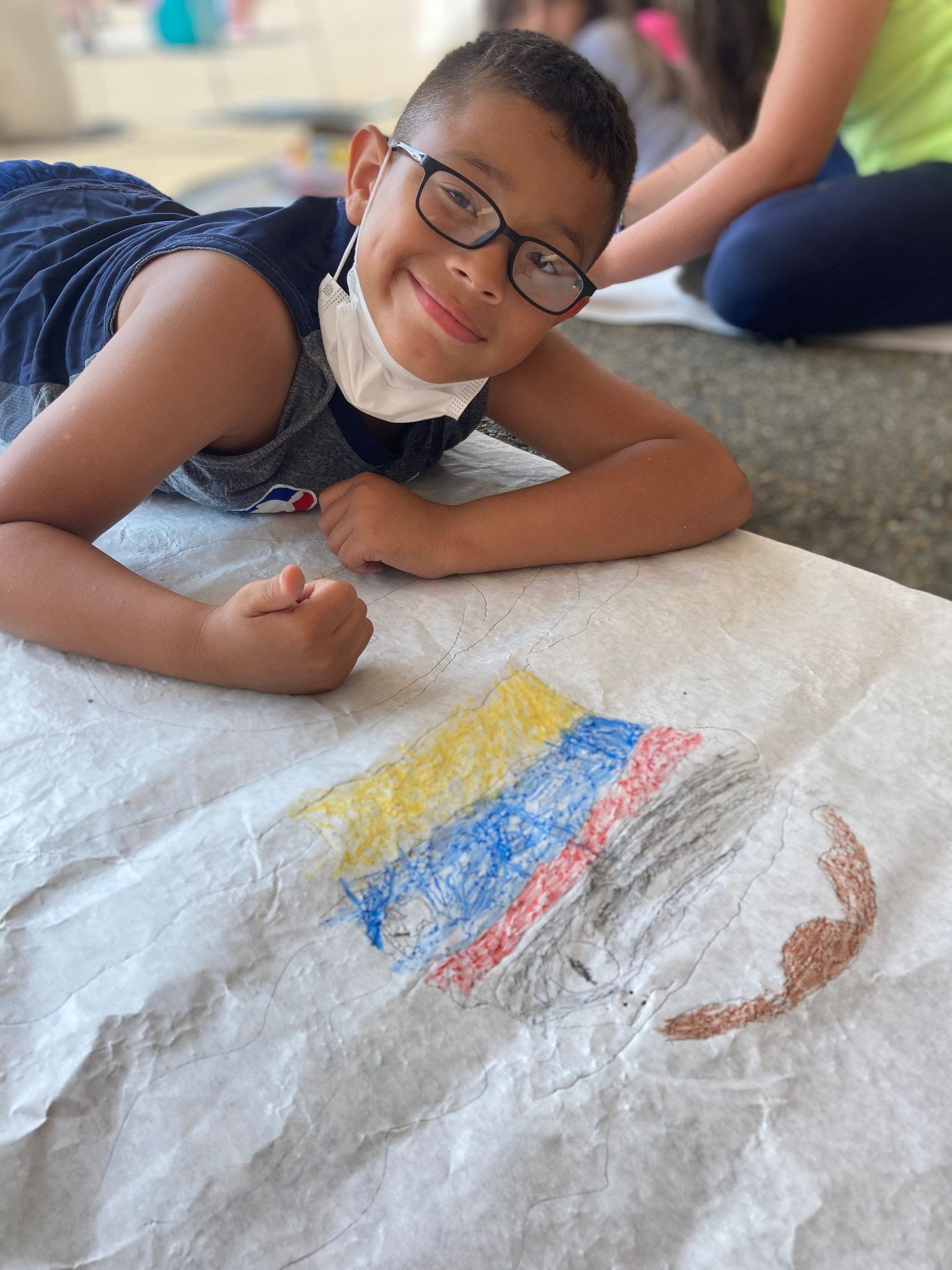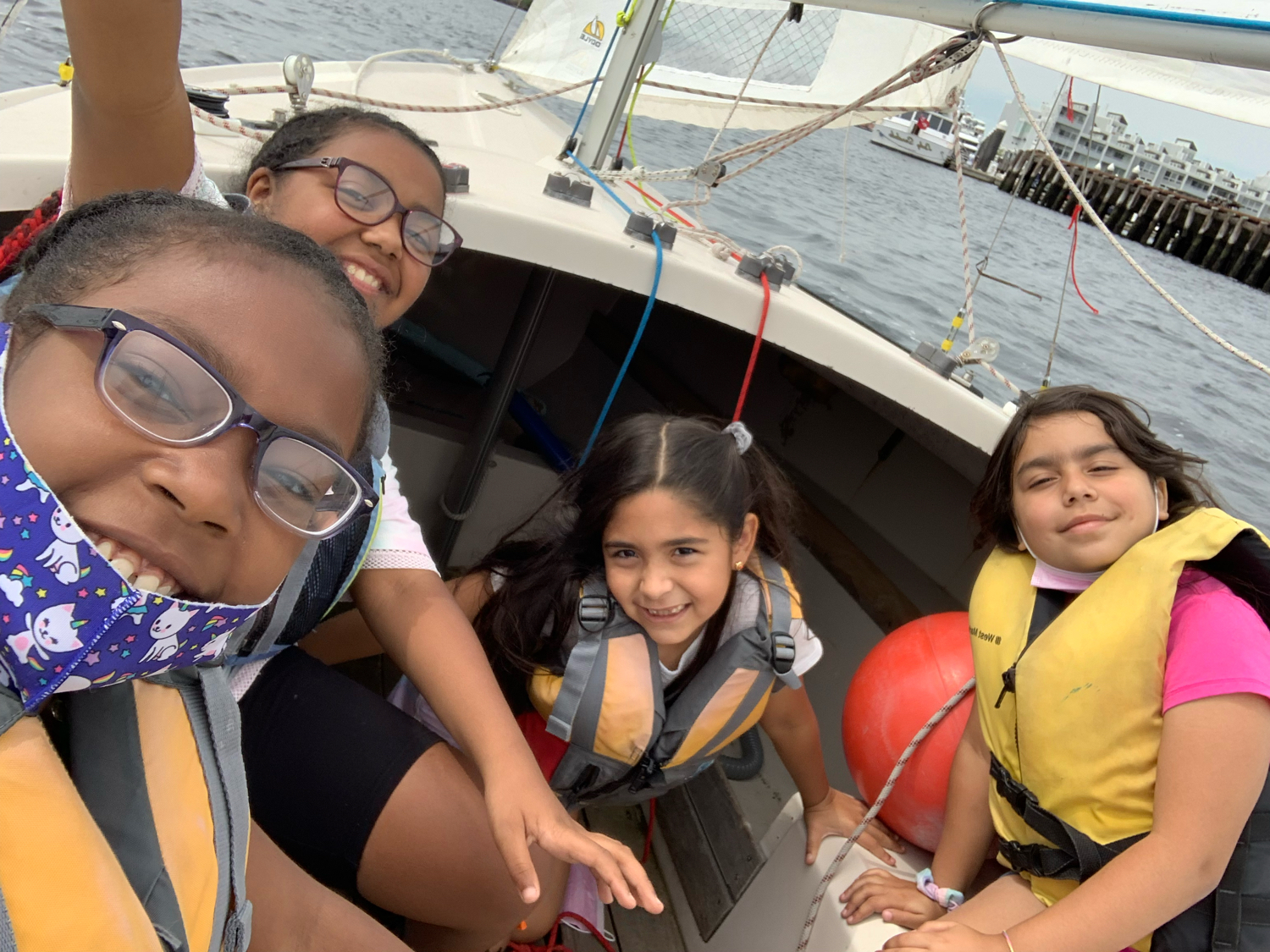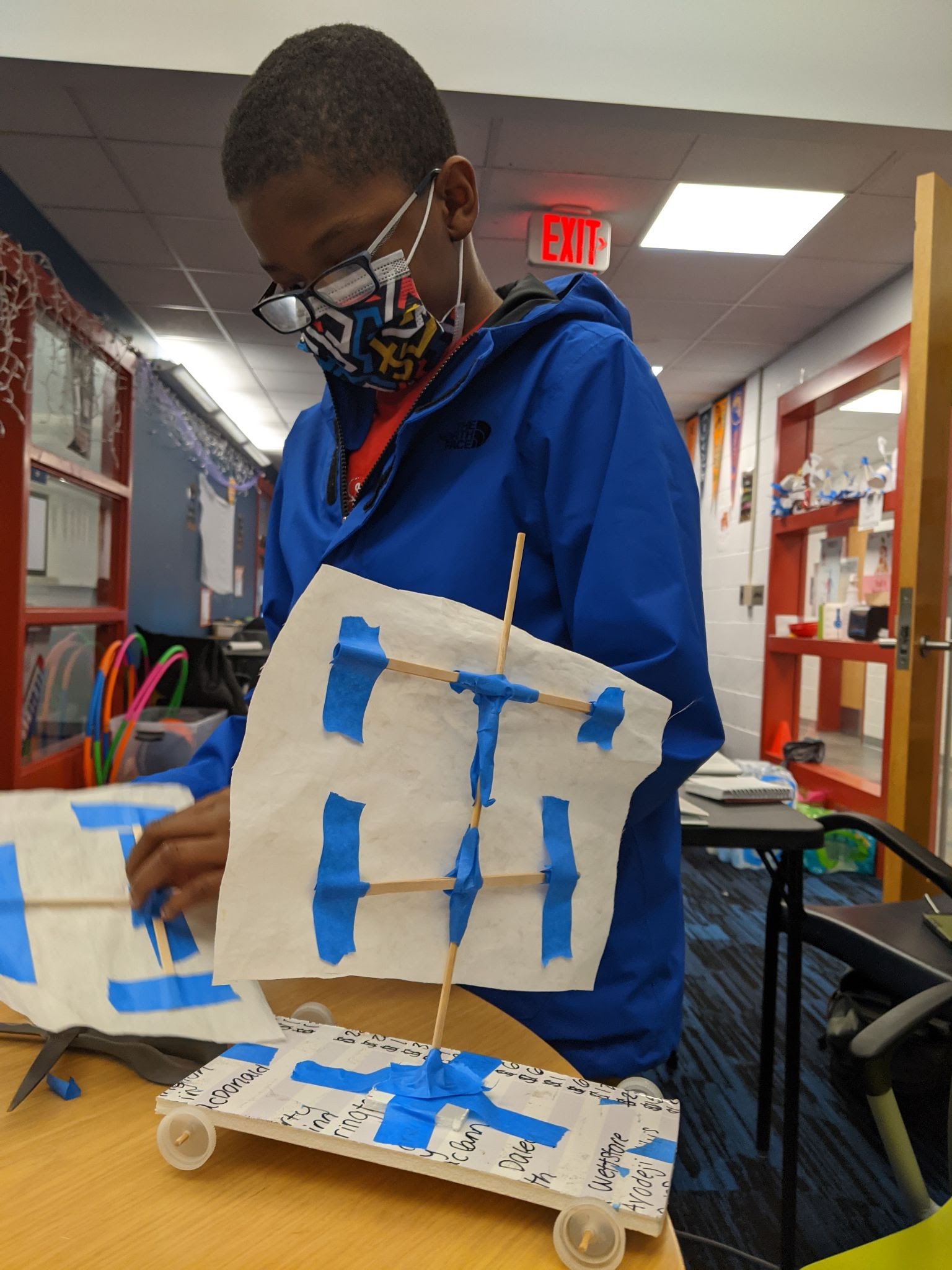Week 2 recap- 2020/2021
Hello Frostbiters,
Although one could hardly call last weekend "Frostbiting" what with 60-plus degree temperatures, sunny skies and great breeze. Welcome to our Week 2 recap. I have my notes to share for the week, and I'm also very happy to share some great tips from Ken Leger as well. Let's get to it!
It was a beautiful day on Boston Harbor and we had twenty boats on the line for another terrific day of racing with some really excellent competition. We were so fortunate to have such a great kickoff to our season on Week 1, that we didn't think it could get much better. But Week 2 did just that.
The forecast was almost identical to the previous week's, but with slightly less wind and a little more sunshine. The course was set in the exact same vicinity, with windward marks in line with the boathouse on Lewis Wharf. Our starting line was set in the middle of the channel, closer to the East Boston side near the fuel docks, and across from Rowe's wharf. Because the wind was a little lighter this week, we made the legs a little shorter as well. As we were setting the course we noticed the breeze oscillating from Long Wharf and the aquarium on the left edge, to Flagship Wharf in Charlestown on the right edge. It seemed to settle down a little more as the day went on, but there were still plenty of shifts to be found all day long.
The current was definitely not as big of a factor this week. We had an incoming tide the entire time we were on the water, but I still noticed a slight outgoing current, coming from top to bottom of the course. I believe they were draining the Charles river for most of the day, so the current was most likely the less dense freshwater going against the incoming salt water.
Start of Race 1
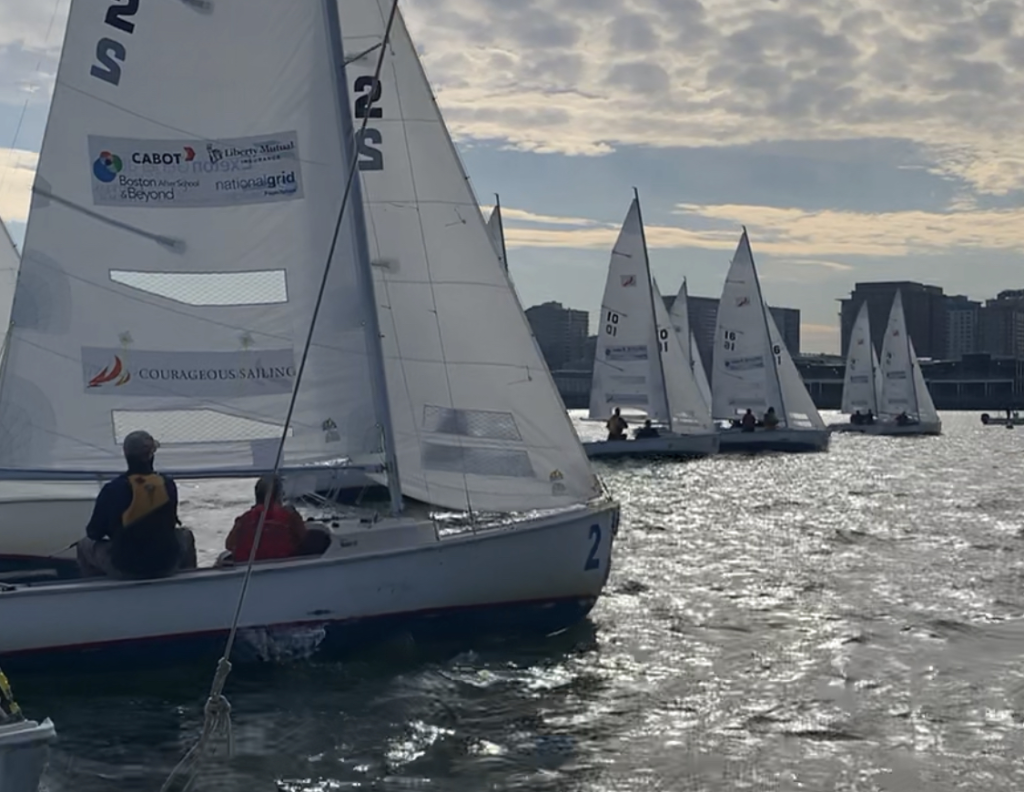
The beginning of Race 1 had about half of the fleet up on the line at the start. The wind was in a bit of a left phase at the start and there were about 6 or 7 boats jockeying for position at the pin end. Pratt/Coyle in #19 are closest at the pin end. Marston/Brand in #2 were closest at the boat end. In the bottom left corner you can just see the tip of the bow of Constantineau/Lopez. Right behind them were Legler/Smith who then became the first boat to tack and head to the right side of the course. It was about a 60/40 split with the slight majority of boats staying to the left side. Pinder/Taylor were the first boats to reach the windwards, followed by Marston/Brand. Unfortunately as they were rounding, Marston/Brand had their traveller break apart. They made a valiant, yet fleeting attempt to jury rig it, but it was obvious that the boat was not sailable.
To attract the attention of the safety boats on the water, Marston/Brand made the very very smart move of taking down their main sail, and sailing clear of the rest of the fleet. Whenever the safety boats see this, they immediately know something is wrong and will respond immediately, as was the case here. In the future if you ever find yourself in a similar situation and need help, drop one of your sails. It's the quickest and most effective way to attract the attention of the staff out on the water. Luckily for everyone the damage was minimal and we were able to tow them back to the dock, and get them back out on the water in another boat.
At the leeward roundings, Pinder/Taylor had further stretched their lead now that Marston/Brand were forced to withdraw. They, and the next few boats behind them, took the left gate and stayed mainly on the left side of the course on their second trip. Terry/Lucia were the fifth boat to round, but the first boat to take the right gate. They, along with Legler/Smith and Constantineau/Lopez opted for the right gate and were able to pick up quite a few spots. Terry/Lucia finished in first, followed by Legler/Smith in second and Pinder/Taylor in third.
Race 2 had a much more aggressive start, with most of the fleet right up on the line. It appeared that one or two boats were going to be OCS at the start, but they managed to clear themselves at the last minute. Most of the fleet was bunched in the middle of the line with more space at the boat than usual. Pinder/Taylor, Constantineau/Lopez and Lombardo/Doak were able to distance themselves from the rest of the fleet as they headed upwind. But at the leewards it was Robinson/Pereira who would round in first.
Leedward Rounding Race #2
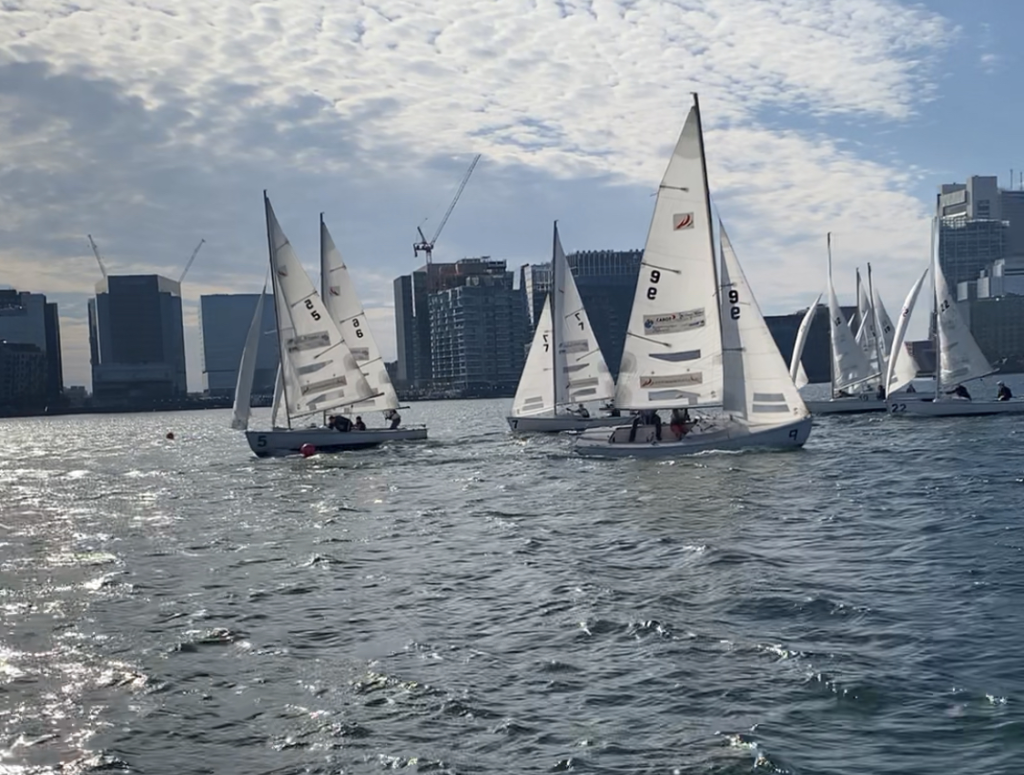
Constantineau/Lopez (#7) were the fourth boat to take the right gate, but would finish the race in 1st place. Kotsatos/Marsh rounded in 8th and finished 2nd. Lee/Veenland-Lee (#6) came in third for the race,
There was a slight delay between races 2 and 3 as we readjusted the windward marks which had been taken for a short ride. The breeze had died a bit for race 2, but was back up for race 3. By this point most of the clouds were gone, and I even saw a few people removing some layers because it was so (relatively) warm out! The first attempt at Race #3 was cancelled because more than half the fleet was OCS at the start, and we had our first general recall of the day. Typically after a general recall, we will fly the "I" flag (yellow field with a black circle) and enact the 1-minute rule. When the "I" flag is up, any boat that is OCS within one minute of the start must round either the boat or the pin in order to exonerate themselves. With about thirty second to go in the restart, the wind became very light, and very very swirly. As a result, the middle of the line became one big cluster of very slow, very frustrated Rhodes 19s and almost no one was up on the line at the start. Marsh/Kotsatos (Marsh on the helm this time) had stayed far away from that group and instead attacked the boat end with a ton of speed about ten seconds after the start. They very quickly tacked off, got out to some clear air and lead the way the entirety of the race. Terry/Lucia finished in second and Marston/Brand, having received a new boat, finished in third.
Start of Race #4
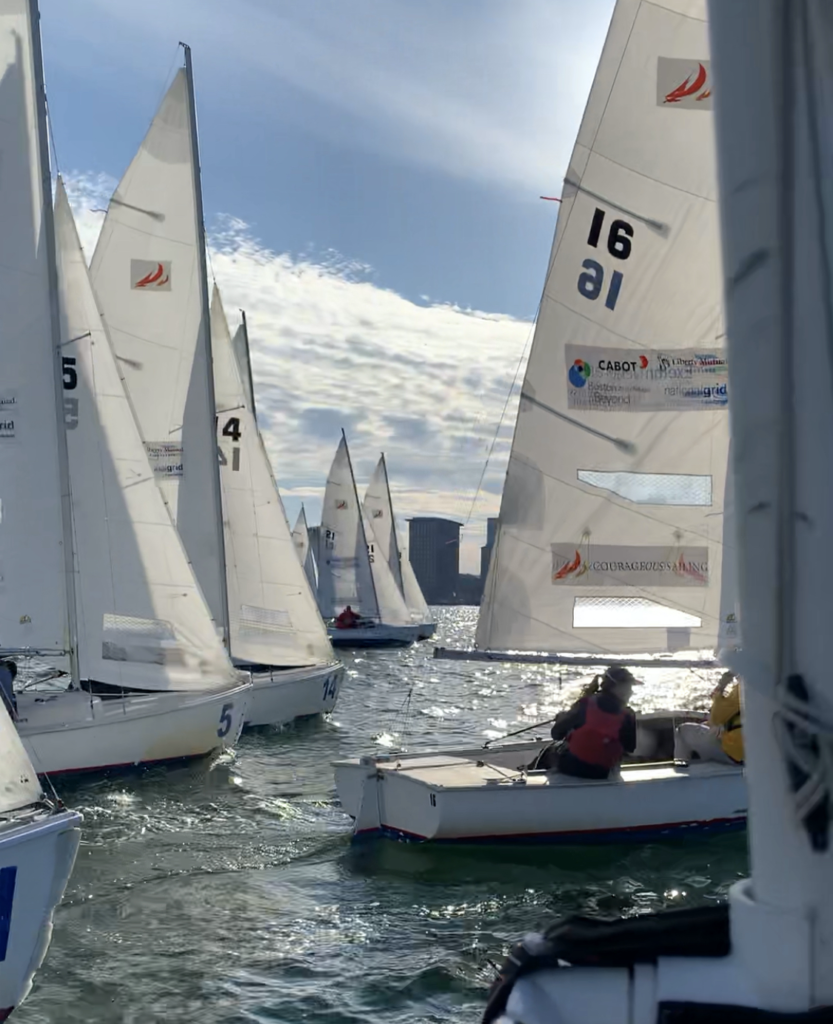
The breeze came back up for the start of Race #4 and also went pretty hard to the right. There was a big pile up at the boat end, and boat #16 was OCS. Robinson/Pereira and Asimacopoulos/Hebert were were able to distance themselves from the rest of the fleet on the first beat up the course. Robinson/Pereira rounded the leewards in first, but fell behind Asimcopoulos/Hebert the second time around. Constantineau/Lopez came in third.
Race #5 saw the wind come back around to square, and another aggressive start. Maybe a little too aggressive as a good portion of the fleet was OCS again. Sometimes when one boat is really pretty far over the line with about 10 seconds to go, they can drag the rest of the fleet over with them, and that's exactly what happened this time. The fleet remained aggressive on the restart, but everyone stayed clear this time.
Start of Race #5
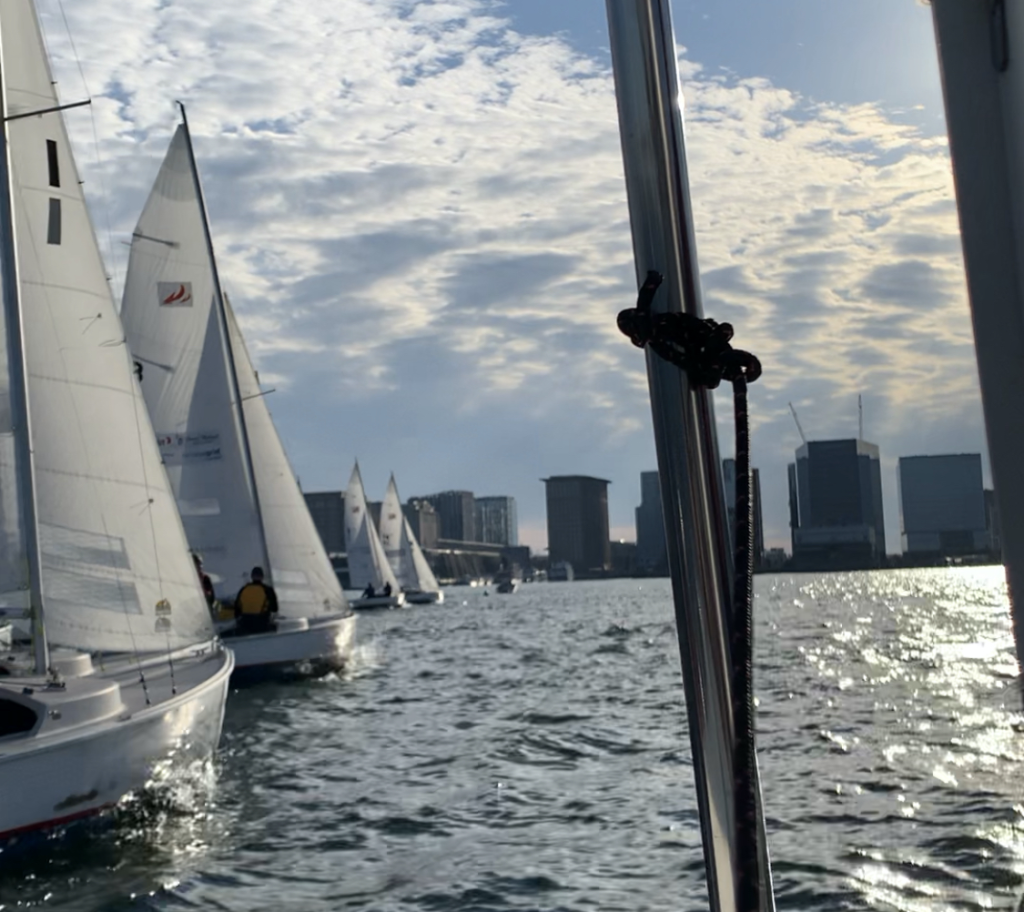
The breeze dropped pretty significantly during race #5 and boats who went too far left were stuck in a big windshadow. Most of the fleet were on the right side of the course as they came down to round the leeward marks. Robinson/Pereira stuck to the rhumb line and rounded in first. However they would be passed by Kotsatos/Marsh who finished with their second bullet of the day.
Start of Race #6
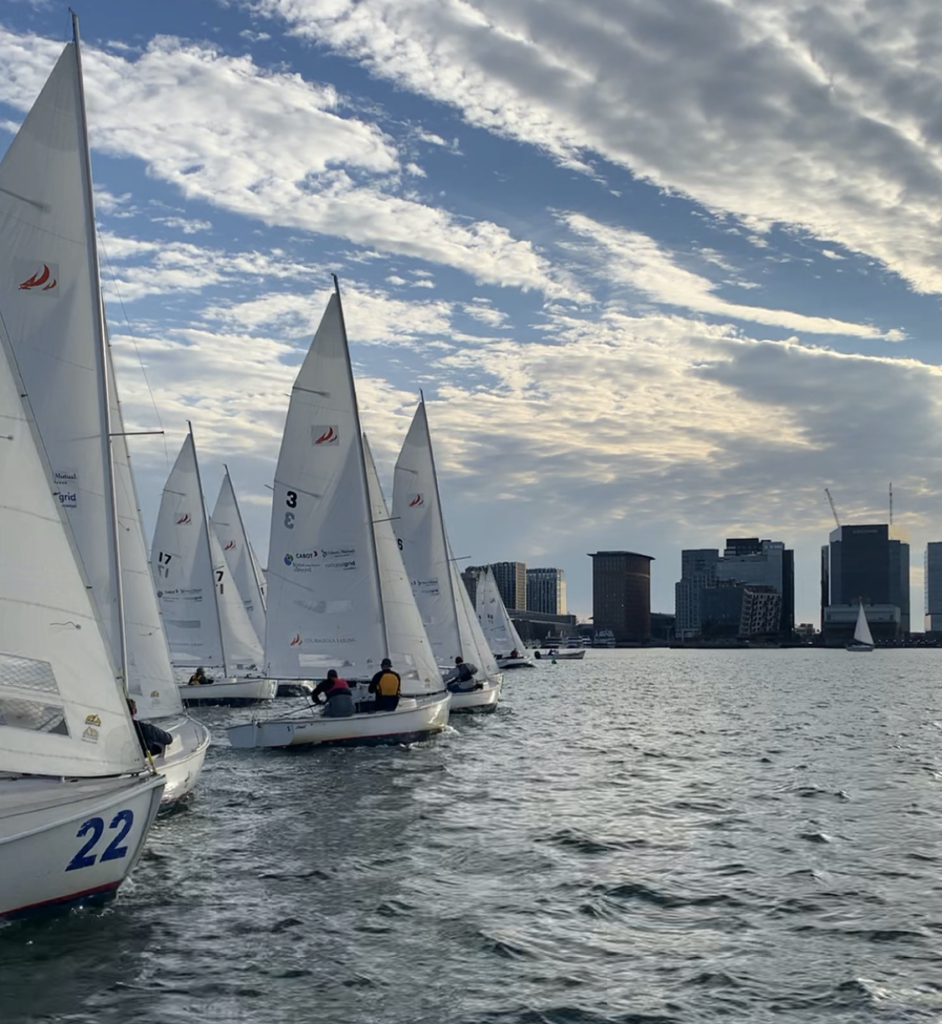
Race 6 was our last race of the day, and was a course 5, same as last week. Legler/Smith had a strong start at the pin end, Terry/Lucia (#3) in the middle and Pinder/Taylor (#22) at the boat. At the finish we had a very tight tacking duel between Legler/Smith and Kotsatos/Marsh, with Legler/Smith able to gain a slight advantage and take the bullet with Kotsatos/Marsh in second and Terry/Lucia in third.
Thanks so much to everyone who came out and participated in a fabulous day on the water. A special congrats to our top 5 finishers...
- Niko Kotsatos and Carolyn Marsh - 18 points
- Ken Legler and Emmet Smith - 22 points
- Cole Constantineau and Manlio Lopez - 25 points
- Chip Terry and Dave Lucia - 26 points
- Matt Marston and Cheney Brand - 37.5 points
You may look at Marston/Brand's score and wonder how they managed to score half a point. Because their traveller broke during racing, they filed for redress. When you file for redress, you have to go through a redress hearing, which is exactly what they did. During the hearing it was determined that the breakage occurred due to no fault of their own, and for the races they missed they were given an average of their score for the series. That's where the decimal comes in.
And now as promised, I'd like to share with you some of the wisdom on the day from our friend Ken Legler, who is as knowledgeable as they come...
From Ken
Frostbiting notes from November 21, 2020
Downwind Strategy and Technique
To jibe around the offset or not to jibe.
Emmet and I opted to jibe most of the time for a few reasons but there are downsides. The worst part is immediately sailing under the offset leg with all its dirty air but the advantages outweighed that initial cost. Pressure wise, there was more of it slightly more often on the far side of the run, away from the skyscrapers. That’s strategy. The tactical advantage was two-fold; since few other boats jibe right away, more boats that don’t jibe form a cluster and take each other’s wind. Second, you can have a starboard right-of-way advantage later in the leg. That last point never really helped us today but more wind and more clear sailing away from the other boats was helping often. One thing to watch out for when jibing onto port to start the run; all the boats still coming upwind have right-of-way over you so you must pick a clear lane through that includes fast downwind angles. A couple times we opted not to jibe due to rounding the windward marks in a header. Such a left wind shift allows a bare off onto a fast reach for good initial getaway. However, we could still run out of wind later in the run when sticking to the side closer to the buildings.
Boom vangs matter.
Funny how our vangs are rigged, it’s hard to get them super tight. That’s by design since it is dangerous to sail around with too much vang, especially in a large public sailing program with lot’s of new sailors. The good news is that you rarely want the vang super tight anyway. On the run the vang should be a little loose so the sail can twist out a bit up top. Twist at the top allows you to keep your speed even when temporarily sailing by-the-lee. Twist is more forgiving to imperfect trim in windshifts and twist also helps make the boat heel to windward. (Use backstay tell-tales to see if you are by-the-lee). Too much twist can be a problem. If it gets windy, the boom can get too high, which: 1. the main spills air off the top of the leach, 2. the main drives the boat over to windward causing lee helm which is a big drag, and 3. it looks bad.
Why heel to windward?
By raising the leeward waterline out of the water, the boat gets skinnier and deeper. This shape in the water reduces “wetted surface area” and causes less drag. Heeling too much to windward causes lee helm which is more drag so there is a trade off by feel. Windward heel also helps hold the winged jib out with gravity.
Let’s talk jib winging.
Emmet is great at this. When we jibe, I pull the traveler up to windward with one yank, then grab all four parts of the main sheet and we roll jibe. Then we flatten and continue rolling into windward heel. Just as we hit windward heel, Emmet rips the jib sheet through the windward blocks to accelerate it’s movement across the bow. Emmet is also grabbing a different part of the jib sheet to quickly lead it around the shroud. This immediate new wing gets us going low and fast right away after jibing. It’s also important to jibe fast sometimes with a tiny bit of over steering to stay in a wind lane while the boat behind you is also jibing.
What are the best angles?
Main twist allows you to sail low, even by-the-lee, but that’s not the fastest angle. Nor is dead downwind. Depending on wind velocity and waves, the best angle while winging the jib is between five and ten degrees above a run. Sailing ten above is what Emmet calls “high wing,” doable in flat water and good breeze, hard in summer waves. The winging laylines toward the gate ray out at ten degrees from each gate. Finding good lanes within those boundaries is the plan. That said, it is okay to jib reach temporarily to get to where you need to go. For example, if a boat, or group of boats, is going to take your wind for the last six lengths of the run, sail fast just outside the laylines until you are a fast reaching angle away from the mark and jib reach in maintaining good speed through the short-lived blanket zone to the inside turn at the mark.
This temporary reaching should be limited to the beginning or end of the run. The best strategy downwind includes enough lateral separation for a long period of winging without compromising your fastest course or your clear wind.
Thoughts on light air downwind?
No, not fun enough to write about at this time. Think summer series with a dying sea breeze where you end up sailing under the wind shadow of the Live Eddy building.
Thank you so much Ken! I am constantly reminded of just always how much more there is to learn about our sport.
Speaking of learning more, I was today years old when I learned about an app called RaceQs. This was brought to my attention from fleet member Luke Leafgren from team Sled Dogs. Luke was out racing on Saturday and was using the app, and the results are pretty neat. Take a look! It seems to me that if we had more boats using this app while racing, we may be able to get some great data. Please feel free to talk to myself or to Luke if you have questions about it.
Last but not least, I'd like to follow up on the video about Courageous that I shared last week. Many of you have come to us saying that you wished you knew more about what Courageous actually DOES. It's very true that when we're shoveling snow off our boats, it's hard to imagine that in the summer (well, give or take Covid), there are 180 kids swarming around the pier on any given day! Our diverse group of sailors (half of Courageous kids identify as youth of color) are learning how to sail (no shocker there), taking swimming lessons, participating in our free, environmental science-based Boston Public Schools academic program, building solar boats, checking out our lobster traps, or even getting paid to be an Instructor-in-Training.
You--our racers--are some of the best ambassadors and spokespeople for the Courageous mission, and in that spirit, I'll be sharing some info and resources with you in these emails, including the one-page overview that's attached. If you'd like to learn more, or get more involved, let me know and I can connect you with the right person.
That wraps up our Week 2 recap. Thank you to Ken Legler for your write up, and to Luke Leagren for sharing that info. And thank you to everybody who came out and joined us on the water for another great week of racing. We here at Courageous Sailing with you a safe, healthy and happy Thanksgiving holiday, and we look forward to seeing you again after the break!
Best,
Nate and the Courageous Frostbite Team


